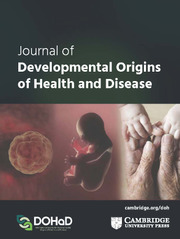 “Evidence suggests that activation of the endocannabinoid system offers cardioprotection.
“Evidence suggests that activation of the endocannabinoid system offers cardioprotection.
Aberrant energy production by impaired mitochondria purportedly contributes to various aspects of cardiovascular disease. We investigated whether cannabinoid (CB) receptor activation would attenuate mitochondrial dysfunction induced by endothelin-1 (ET1).
Acute exposure to ET1 (4 h) in the presence of palmitate as primary energy substrate induced mitochondrial membrane depolarization, and decreased mitochondrial bioenergetics and expression of genes related to fatty acid oxidation (i.e. peroxisome proliferator-activated receptor-gamma coactivator (PGC)-1α, a driver of mitochondrial biogenesis, and carnitine palmitoyltransferase (CPT)-1β, facilitator of fatty acid uptake).
A CB1/CB2 dual agonist with limited brain penetration, CB-13, corrected these parameters. AMP-activated protein kinase (AMPK), an important regulator of energy homeostasis, mediated the ability of CB-13 to rescue mitochondrial function. In fact, the ability of CB-13 to rescue fatty acid oxidation-related bioenergetics, as well as expression of PGC-1α and CPT-1β, was abolished by pharmacological inhibition of AMPK using compound C and shRNA knockdown of AMPKα1/α2, respectively.
Interventions that target CB/AMPK signaling might represent a novel therapeutic approach to address the multi-factorial problem of cardiovascular disease.”
https://www.ncbi.nlm.nih.gov/pubmed/31815823
https://insights.ovid.com/crossref?an=00005344-900000000-98463

 “The endocannabinoid system (ECS), modulated by metabolites of linoleic acid (LA), is important in regulating cardiovascular function.
“The endocannabinoid system (ECS), modulated by metabolites of linoleic acid (LA), is important in regulating cardiovascular function. “Epilepsy is a neurological disorder that affects approximately 50 million people worldwide.
“Epilepsy is a neurological disorder that affects approximately 50 million people worldwide. “Chronic cerebral hypoperfusion (CCH) is a major contributor to cognitive decline and degenerative processes leading to Alzheimer’s disease, vascular dementia, and aging. However, the delicate mechanism of CCH-induced neuronal damage, and therefore proper treatment, remains unclear.
“Chronic cerebral hypoperfusion (CCH) is a major contributor to cognitive decline and degenerative processes leading to Alzheimer’s disease, vascular dementia, and aging. However, the delicate mechanism of CCH-induced neuronal damage, and therefore proper treatment, remains unclear. “High mobility group box 1 (HMGB1) is a late phase inflammatory mediator in many inflammatory diseases. Extracellular HMGB1 could bind to many membrane receptors to activate downstream signaling molecules and promote inflammation resulting in cell and tissue damage.
“High mobility group box 1 (HMGB1) is a late phase inflammatory mediator in many inflammatory diseases. Extracellular HMGB1 could bind to many membrane receptors to activate downstream signaling molecules and promote inflammation resulting in cell and tissue damage.
 “Endometriosis affects a large proportion of women during their reproductive years and is associated with pain and infertility, also affecting psychological wellbeing and quality of life. The pathogenesis of the disease remains unclear, although it is believed to be multifactorial.
“Endometriosis affects a large proportion of women during their reproductive years and is associated with pain and infertility, also affecting psychological wellbeing and quality of life. The pathogenesis of the disease remains unclear, although it is believed to be multifactorial. “Transcutaneous electrical nerve stimulation (TENS) promotes antinociception by activating the descending pain modulation pathway and consequently releasing endogenous analgesic substances.
“Transcutaneous electrical nerve stimulation (TENS) promotes antinociception by activating the descending pain modulation pathway and consequently releasing endogenous analgesic substances. “Available data support the notion that
“Available data support the notion that